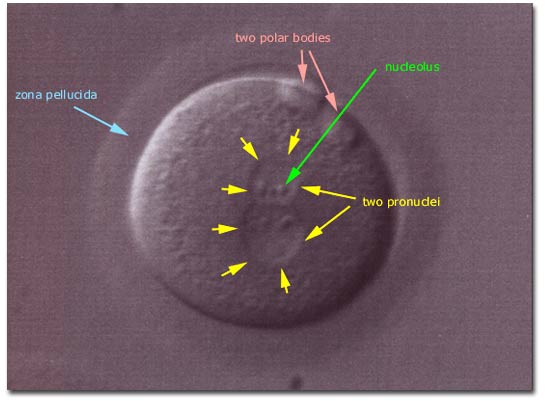|
Fertilized Human Egg with 2 Pronuclei

Photomicrograph (photograph through a microscope) of a fertilized human egg with two (male and female) pronuclei that are adjoined in the central region of the egg. These pronuclei contain the male and female chromosomes (respectively) and will (normally) fuse (called “syngamy”) to ultimately form a single nucleus that has a pair of each of 23 chromosomes (one of each pair from the male = father and one of each pair from the female = mother).
Identification of pronuclei is confirmed by seeing the nucleoli (small rounded masses within the pronucleus that produce essential structures called “ribonucleoproteins”). The second polar body is extruded from the egg once fertilization occurs, so the presence of two polar bodies also signifies a fertilized egg. Normally fertilized eggs with 2 pronuclei and 2 polar bodies are seen 12-20 hours after insemination during In Vitro Fertilization (on post- egg retrieval day 1).
|

|